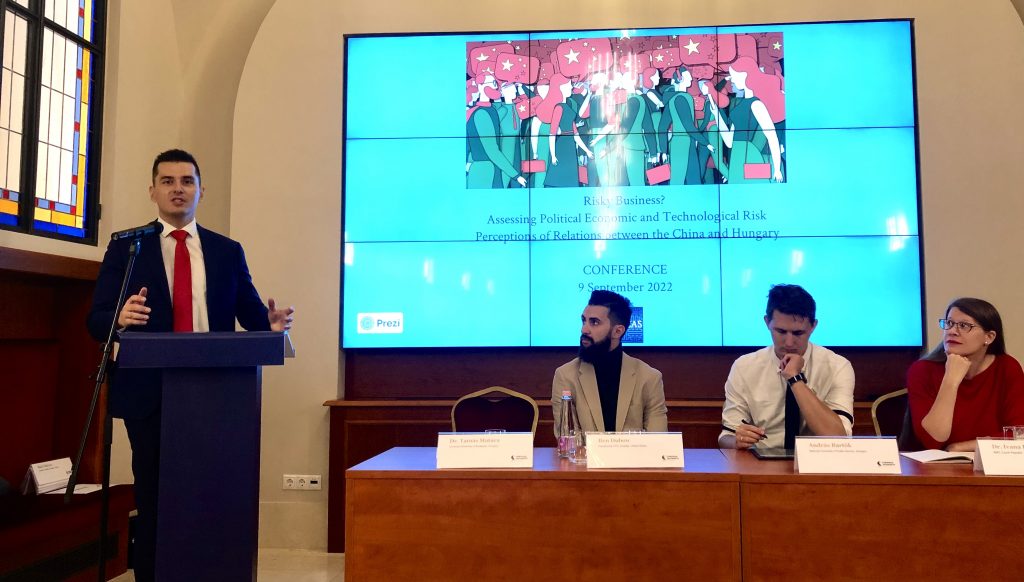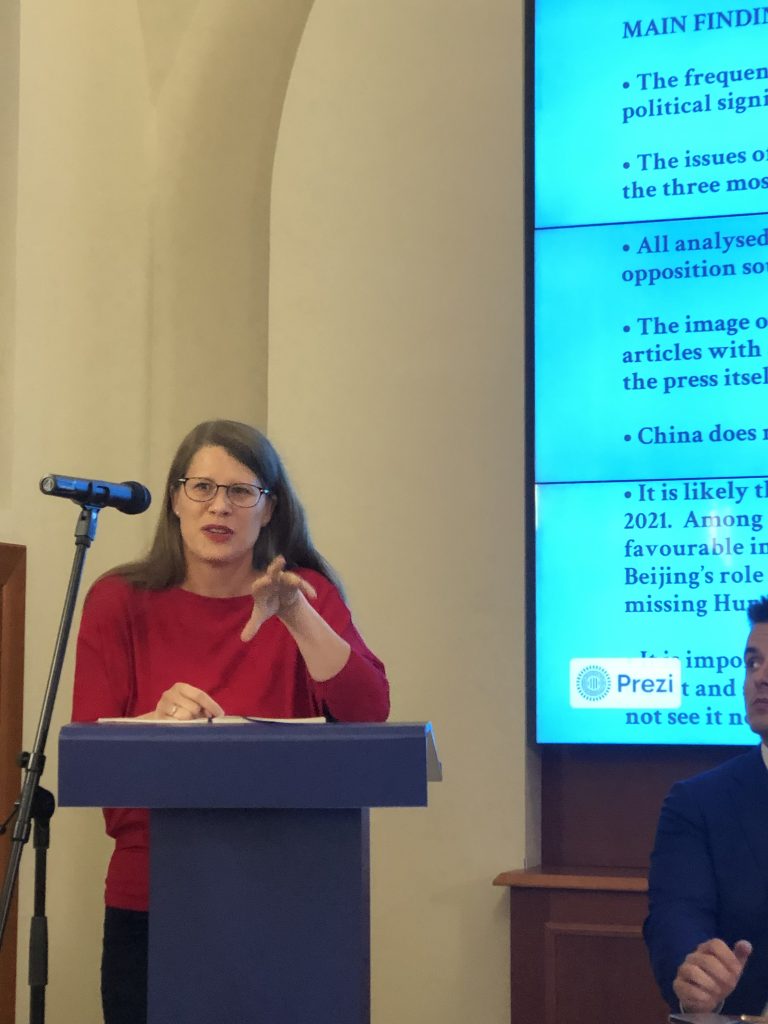September 9, 2022
The EUCON Budapest Eurasia Summer School incorporated this half-day conference into its program, offering its participants the opportunity to hear from a group of Central European researchers funded by the US Government to investigate risk perceptions of relations with China in the region. While Chinese presence is relatively low level in most of Central and Eastern Europe, investment and other engagement is higher in Hungary where there are warmer bilateral political relations and a sizeable local Chinese community.
Tamás Matura presented research findings that there was no evidence of Chinese influence campaigns in Hungary, but rather domestic politics-driven polarization of views on most issues. Hungarian media coverage tended to be focused on issues directly relevant to domestic politics such as Covid-19 vaccines and the proposed establishment in Hungary of a campus for China’s Fudan University. Pro-government media tended to promote benefits of Hungary-China relations, while pro-opposition media tended to criticise Hungary-China relations. An exception was that coverage of Huawei, a Chinese telecommunications firm actively investing in Hungary, was quite negative even in some pro-government sources such as Magyar Nemzet.
Ben Dubow, from US tech company Omelas, using AI to analyse which power is winning the narrative battle in each country of the region, found China has struggled to gain engagement or traction from its attempts at soft power influence. Reflecting the different media narratives in Hungary from most of its neighbours, Hungarian approval of China-related issues was ranked third in the Central and Eastern European region after Serbia and Montenegro.
On one issue, there was much wider consensus, with András Bartók, from the Hungarian National University of Public Service, finding significant cross-party opposition to China’s strategic partnership with Russia, announced on the eve of Russia’s invasion of Ukraine. Indeed, Ivana Karaskova, founder of MapInfluenCE in the Czech Republic, also found significant changes in perceptions of China in the region since the outbreak of war in Ukraine. She noted how in earlier years media narratives across the region had expected economic benefits from engagement with China, although Czech journalists had not subscribed to these narratives, focusing instead on human rights, Tibet, Taiwan and censorship in China. Further, she noted how Chinese narratives designed for the global South that blamed NATO for the lead up to the Ukraine war were never likely to resonate in Central and Eastern Europe.
Research of Hungarian elites by Máté Mátyás and Viktor Friedmann found that the EU and US are perceived by far as the most important international partners for Hungary, but that most welcomed diversification and were most accepting towards China in the field of economic cooperation. National security risks were considered manageable and Chinese students considered economically useful, although interviewees had expressed concerns about problematical financial arrangements underpinning the proposed establishment of a Fudan University campus in Budapest. Elites were less polarised on China-related issues, in particular business elites who may be more experienced in dealing with China.
In Poland, Alicja Bachulska of the War Studies University, reported that the war in Ukraine had deeply affected Polish views of China. There was no polarization on political grounds, as in Hungary. The ruling Law and Justice Party had shifted from a pro-China policy initiated by the previous Civic Platform government to much less enthusiasm. Poland is working on 5G legislation, has signed an agreement with the US to exclude Chinese technology but has not completely banned Huawei. The US is Warsaw’s only security partner so the US change of policy on China has influenced Warsaw’s change. She underlined that China’s anti-US, anti-NATO narratives do not meet with approval in Poland.
Tünde Lendvai, from Hungary’s National University of Public Service, found there are no restrictions in Hungary for either public or private critical infrastructure in the utilisation of Chinese-sourced equipment or software. There has been no case of Chinese hacking of Hungarian infrastructure, yet Russian hacking has taken place. Her colleague, András Tóth, indeed discussed a number of denial of service attacks launched against Ukraine from Hungary at the time of the Russian invasion, and remarked that the compromised industrial control systems utilised Chinese manufactured equipment. He also reported a case of a hidden Chinese-sourced chip found under another chip in an Intel device in Hungary in recent years.
Finally, Adam Kalivoda, of the Central European Institute of Asian Studies, reported on a study tracking academic engagement between China and Europe which found that Germany and Poland were significantly in the lead in research partnerships. Almost half of European research collaborations were with Chinese universities that also have research collaboration with the Chinese military, according to the Australian Strategic Policy Institute. This revealed the alarming problem that universities in Central and Eastern Europe did not have adequate risk management processes in place in relation to international research partnerships.


